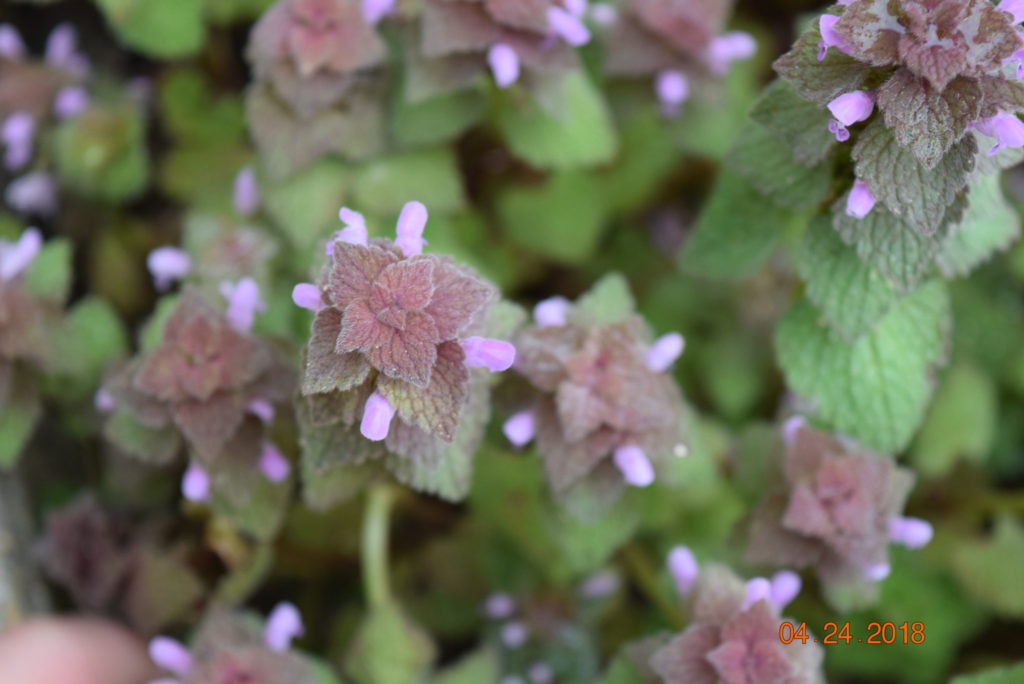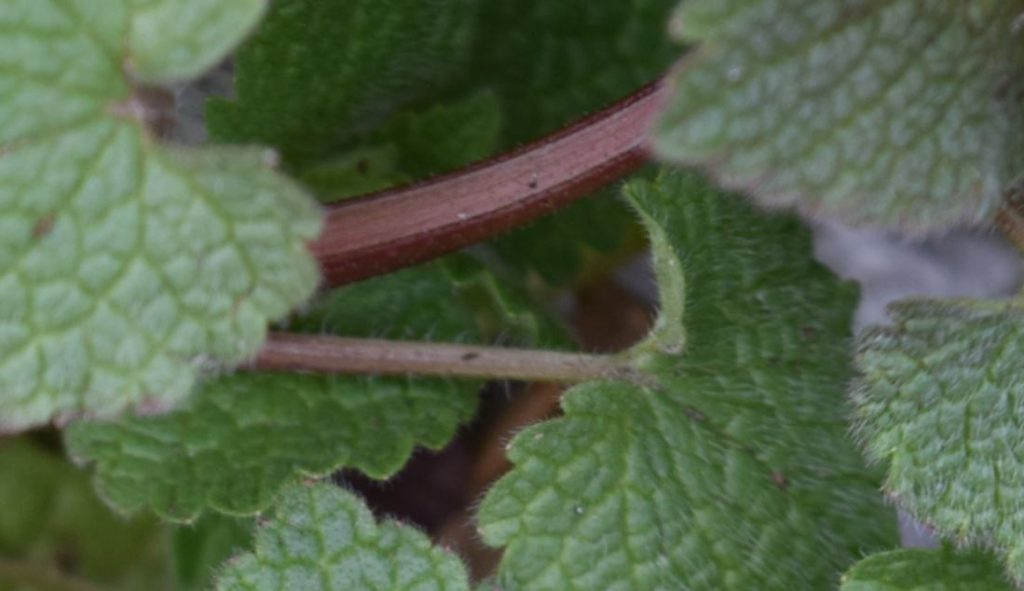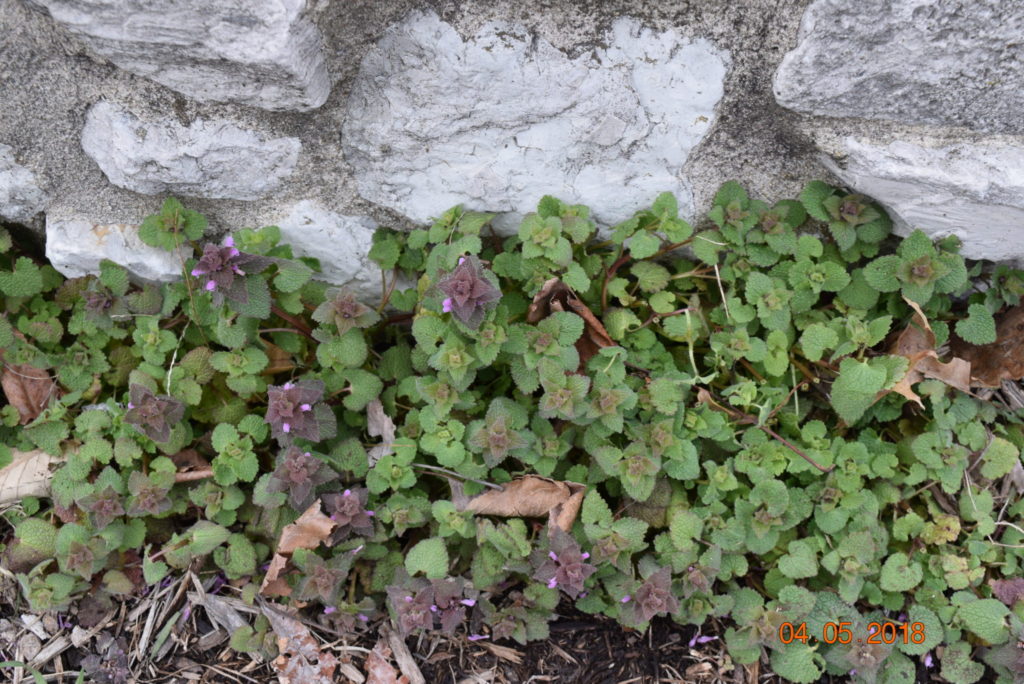Biology: Purple deadnettle (Lamium purpureum) is a common winter annual broadleaf weed found throughout the US. It is closely related to another winter annual broadleaf, henbit (Lamium amplexicaule). Both have vibrant purple flowers that can been seen now in lawns, landscapes, and fields. To see more about henbit, refer to this article from last spring: https://www.purduelandscapereport.org//article/spotlight-on-weeds-henbit-lamium-amplexicaule/
- Figure 1. Purple deadnettle is a winter annual that flowers in early spring.
Identification: Purple deadnettle is a winter annual meaning that it germinates in the fall, survives the winter as a small seedling, until spring when it flowers, develops seeds, and then dies when temperatures rise in late spring and early summer. Purple deadnettle blooms are mainly visible in April although you can find it blooming earlier and later depending on the area it is growing and the temperatures. Purple deadnettle is a member of the mint family and has a characteristic square stem. Purple deadnettle flowers are light purple in color and are small and tubular in shape. Purple deadnettle leaves are triangular in shape with shallow lobes. Typically, the upper leaves are more purple-red in color than the lower leaves.
- Figure 2. Purple deadnettle is in the mint family, thus has square stems.
Cultural control: Purple deadnettle mainly occurs in soils that are disturbed during the fall when it germinates. If you only have a few purple deadnettle plants, you can usually pull them by hand.
Biological control: Some organic herbicides are available. Among the postemergence organic herbicides, the most common are pelargonic acid (Scythe) and acetic acid (5 percent or greater solutions). Other products that contain medium-length fatty acids and clove oil (eugenol) show some promise; however, these organic postemergence herbicides are nonselective and can injure actively growing desirable plants in the lawn and landscape, so their use should be limited to direct spot treatments. The bottom line is that most organic postemergence herbicides have limited use in turf and are better suited to weed control in parking lots, fence rows, and other bare ground applications. Many new organic products contain the active ingredient iron HEDTA (FeHEDTA). Multiple applications of this product are required for control. FeHEDTA containing products injure plants less (can actually make them darker green), but their efficacy for weed control is yet to be well documented.
Chemical control: Purple deadnettle can be controlled using preemergence or postemergence products. Though a preemergence herbicide program should be your primary chemical control strategy, there are control options for common chickweed that include both pre- and postemergence options. Preemergence herbicides such as Gallery 75 (isoxaben), Pendulum (pendimethalin), Barricade (prodiamine), Sureguard/Broadstar (flumioxazin), Snapshot (trifluralin and isoxaben), and Dimension (dithiopyr) Postemergence control can be achieved with repeat applications of glyphosate and glufosinate.
- Figure 3. A patch of purple deadnettle with the characteristic purplish new growth near the flowers.


